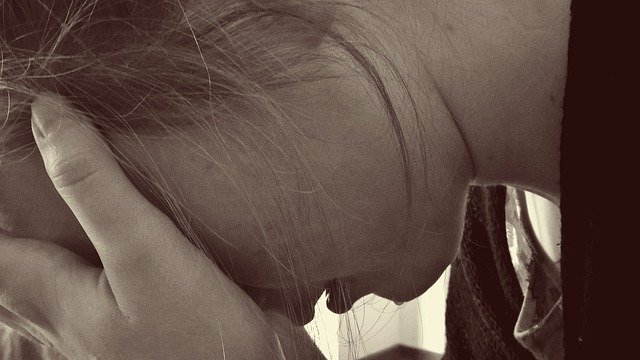On many occasions we have heard our grandparents say the expression “the dead man got on me”. However, its scientific name is sleep paralysis, and like all such ancient pathology it also has beliefs of paranormal origin. Keep reading.
Sleep paralysis: What is it?
Sleep paralysis (popularly known by the expression “the dead man got on me”) is a surprisingly common sleep disorder that occurs during the transition between sleep and wakefulness, either before falling asleep or when waking up.
Those who suffer it wake up abruptly being fully aware of their thoughts, but remaining physically paralyzed. Although they can open their eyes, they are unable to make a sound or move any muscles, which creates a considerable sense of anguish and fear.
The person usually suffers from auditory and visual hallucinations that generally coincide in an intense sensation of presence and movement around their indolent body.
History
Sleep paralysis has been with us since time immemorial and by its nature, in the darkest ages of humanity in which science still did not shed light on certain clinical questions. It seems to be a source of legends or contact with the paranormal, which would give rise to multiple divine or, on the contrary, sinister interpretations.
On the other hand, it is known that the first dating scientific description is that of a Dutch doctor named Isbrand van Diemerbroek in 1674. At that time this phenomenon took the name “incubus”, a word collected from the European popular mythology of the Middle Ages which works to refer to a moment in which a demon perches on a woman asleep to have sex with her.
Fortunately, times have changed, and today science understands sleep paralysis as a neurological disorder rather than a paranormal phenomenon.
Sleep paralysis: Why happens?
This disorder is due to an abnormal intrusion of a REM state during a waking state: That is, you are literally awake, but part of your brain is still engulfed in sleep.
What should be done if it happens to us?
What can be done during this paralysis is to first detect the aforementioned symptoms. Later, concentrate on the movement of the body, since the fingers and toes can move and this will force you to wake up completely. Move your eyes quickly as they will not be affected, and focus on breathing, as controlled breathing is a relaxing technique.
Causes

Sleep paralysis is very common. Many people have had at least one episode in their life.
The exact cause of sleep paralysis is not fully known. Research shows that some of the following situations are related to this paralysis:
- Not getting enough sleep
- Not having a regular sleep schedule, such as those who work shifts
- Mental stress
- Sleeping on your back
How to decrease sleep paralysis?
You can lower your chances of experiencing sleep paralysis by having healthy sleep habits:
- Maintaining a regular sleep routine;
- Avoiding the use of stimulants, especially alcohol;
- Exercising frequently. Unintentionally, we have found one more benefit of exercising: «Prevent the dead man from getting on us»;
- Eating a healthy diet and avoiding eating abundantly at night. Returning to the previous point, another advantage of having a healthy diet keeps us away from dying visits;
- Reducing levels of stress and anxiety.
Religious Beliefs
Depending on the culture which each person belongs to, it could be said that sleep paralysis can be attributed to incubi or spirits. Muslims, for example, attribute it to demonic entities called jinns.
Rumours are running that Freddy Krueger’s creator, Wes Craven, was based on real events. Therefore, phrases of his mythical character such as “you’ve got the body, I’ve got the brain” were not entirely casual.
Specifically, it was inspired by the sudden and nocturnal death syndrome (SUNDS, in its acronym in English) that at the end of the seventies affected more than a hundred Hmong refugees, originally from Laos, in the United States.
Among the supernatural beings that pick up the popular beliefs of the Hmong is the evil and imprisoning spirit dab tsog, who the nocturnal deaths are attributed to.
For their part, the Filipinos (also prone to SUNDS) blame a dark creature with unique hair called Batibat. Both have the custom to sit on the chest of their victims, the same custom as the incubus represented by the German painter Johann Heinrich Füssli in his famous painting “Nightmare” (1870).
The symptoms caused by these devils are a feeling of panic, total or partial paralysis, pressure in the chest, a feeling that there is a presence in the room and visual and auditory disturbances
Myths and Legends

Since ancient times there have been a series of myths and legends associated with this disorder, all of them related to a supernatural cause. One of them comes from Iwate prefecture, where the Kanashibari is said to appear in the form of yûrei and while you sleep, it catches you, sneaking under the sheets of the futon.
He paralyzes the body of his victim with his supernatural energy, while he holds her tightly by the legs or arms, pulling her in the direction of some open window or some apparent danger. When the body finally reacts, the victim can see that over her, on the ceiling of the room, there is a horrible yûrei.
Other legends say that the kanashibari is a possession of a yôkai such as the Inugami, the Kitsune, the Tanuki, or some other type of tsukimono (being that can transform its appearance). It can even be caused by humans, usually priests or sorcerers. When this happens, it is usually overcome with the Buddhist sutras of a shugenja, a kind of priest.



